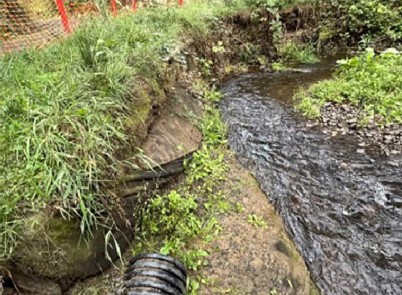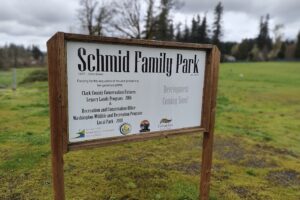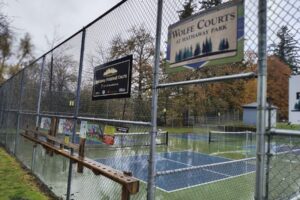Less than three years after it opened for public use, Washougal’s Jemtegaard Trail is being threatened by “significant erosion” of the Gibbons Creek bank.
The City has agreed to a contract with Portland-based PBS Engineering and Environmental Inc. to repair the bank for $69,854, public works director Trevor Evers said during the Washougal City Council’s workshop session on Monday. Oct. 9. The Council will vote to approve the contract on Monday, Oct. 23.
“I think it’s a very important trail, especially for students,” Washougal Mayor David Stuebe told the Post-Record on Thursday, Oct. 12. “I would like to be able to see that (situation) rectified, but we have to do it the right way, and sometimes it costs a little bit of money, but in the long term, (it might) be best for the city.”
Evers said that heavy winter and spring flows have eroded a 40-foot section of the trail bank along the trail, compromising trail structure, and that if left unrepaired, further erosion could undermine the path, present a public safety emergency and jeopardize federal grant funding.
“We have some conditions that have changed significantly out there,” Evers said during the workshop session. “Gibbons Creek is constantly evolving, changing and moving. There’s a pinch point, or a hotspot, and since 2020, heavy bed load and transport contributed to a shift and change from (the creek’s) historical pattern for flows. About two feet of the bank was lost (last) winter, so we’ve removed (a clogged dispersion trench) out there to alleviate overbank flooding.”





